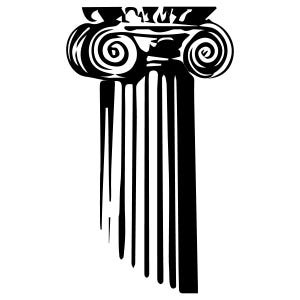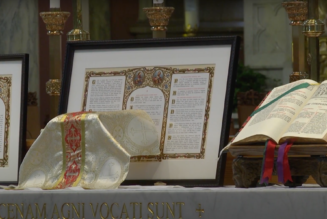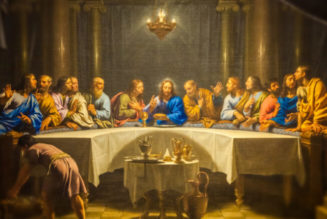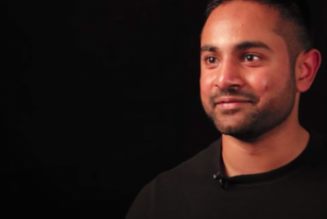Happy Friday friends,
Tomorrow is the Feast of Our Lady of the Rosary, inaugurated in 1571 by Pope Pius V to commemorate the Holy League’s victory at Lepanto after he ordered the faithful of Europe to pray to Herself for success.
Our Lady of the Rosary has become, in some sections of the Church, a kind of talismanic feast, observed with a heavy nostalgia for the era of militant Christendom and temporal triumph.
I know a few people who lean into the day as a kind of commemoration of the “good old days,” when saints carried swords and cool flags, and popes told kings when to go to war, but I think that emphasis misses the more important point.
The victory of Lepanto didn’t kick off an era of martial supremacy for the Christian West. The Ottoman fleet was stopped cold, yes, and along with it the very real possibility that the Italian peninsula and Rome itself could have fallen.
But the Ottoman Empire didn’t crumble, nor was Constantinople reconquered.
On the contrary, the Christian nations of Europe spent the next several centuries proving themselves altogether more enthusiastic about and successful at fighting each other than at fighting anyone else — if “successful” is the right word.
It seems to me that the real lesson of Lepanto, and the real thing worth celebrating, is the certainty of Our Lady’s love and help when we ask, because, as in the words of the Memorare, “never was it known that anyone who fled to thy protection, implored thy help, or sought thy intercession, was left unaided.”
Our Blessed Mother’s love and aid is sure. And since I absolutely need it daily, I should seek it exactly that often, and with the same familiarity and expectation that I have for my earthly mom.
I remember being asked once by a priest if I prayed the rosary every day, as he had recommended. I started hemming and hawing about finding it difficult in the middle of the day to really clear my head and pray “properly,” as I put it.
“What do you mean ‘pray properly’?” he asked me. “If I asked if you call your mom every day, would you talk to me about calling her ‘properly’? It’s a yes or no proposition, you do it or you don’t.”
It’s an exchange I think about almost daily, because I need to pray daily. I need to appeal to Our Mother for help for victory over all the small sins to which I am constantly prone, the petty vanities I’m forever inflicting on my wife and daughter (and JD, come to that), and also the major temptations to which I am prey.
And I need to have confidence that Mary is the loving mother into whose care Christ entrusts the faithful, and that she waits to answer my calls and defend me against the adversary with all the ferocious love of my own mom.
So, enjoy the feast tomorrow, and call your mom.
The News
We reported last night that the Vatican’s diplomatic office was shut out of the drafting process ahead of Pope Francis’ Wednesday apostolic exhortation Laudate Deum, which Francis has called the “second part of Laudato si’,” his encyclical on climate change.
Instead, the pope’s own state department was given “not even a day” to weigh in on the text, or to feed in suggestions from diplomats appointed to the Holy See.
Given that Pope Francis singled out the United States for special criticism in the document, Vatican diplomats are now counting the diplomatic cost of the pope’s words, compounded by the damage done to the secretariat’s credibility.
It has left officials discouraged, they told us, and warning that the move could have long-term diplomatic effects for the Holy See.
—
Pope Francis issued Laudate Deum this week on the Feast of St. Francis of Assisi, and right as the synod on synodality opened in Rome.
The exhortation, which weighed in at a rather shorter 8,000 words, less than a quarter of the length of Laudato si’, didn’t lack for punch, though, with Francis warning that the planet is reaching an environmental “point of no return.”
For a walkthrough of the text’s key points, you can get our full summary here.
—
On the eve of the opening of the session the synod now underway, we reported that Cardinal Joseph Zen has circulated a letter to cardinals and bishops attending the event, warning against synodal organizers’ efforts to manipulate the process.
“Often they claim not to have an agenda,” Zen wrote. “This is truly an offense to our intelligence. Anybody can see which conclusions they are aiming at,” he said, and outlined his analysis of a plan to use the synod to upend the Church’s hierarchical constitution and teaching authority.
“To give the vote to lay people could appear to mean that respect is shown for the sensus fidelium, but are they sure that these lay people who have been invited are fideles?” the cardinal asked, while urging the bishops to petition the pope to at least have episcopal votes counted separately so the mind of the bishops could be understood.
Even the German synodal way conceded this much, Zen noted.
—
By now you’ve probably seen lots of press pool images of the synodal sessions, with delegates sitting around tables earnestly discussing we aren’t sure what, because a near total media blackout remains in effect.
I have to say, sticking a bar in the Paul VI Hall for delegates to hit in between sessions seems like an unusual and unusually thoughtful gesture to me. I’d certainly need a drink.
—
Chastity is not a popular topic — in the Catholic Church as much as in the wider culture. And it’s not a subject you often see linked to the proper production and consumption of beer. But any conversation with Bishop Erik Varden can be unexpected.
If you only read one thing we published this week, make it this conversation.
Bishop Varden is one of the most subtle thinkers we have in the Church right now, and one with a true gift for illuminating ideas with faith and drawing from both to offer a perspective that educates and edifies.
This is the sort of interview I’d pay to read for fun. Don’t miss it.
—
And finally, Bishop Rick Stika, the former bishop of Knoxville, published on Facebook this week the text of a letter which he said came from 10 cardinals, praising his ministry and demanding the Church revisit the circumstances of his resignation earlier this year.
The “open letter” of support for Bishop Stika, who resigned as bishop of Knoxville in June, has so far appeared only on the bishop’s Facebook page, and is signed by an “Anonymous Conclave of 10” cardinals. Apparently.
I say “apparently,” because I contacted Bishop Stika about the text, which only he seems to have received, and about the supposed 10 cardinals, whose names are known only to him, and this is what he told me:
“I don’t know how valid it is,” said Stika. “I just put it out there. I just got it in the mail with some names on it. I know very little about it. I got it this morning and it was signed by people and I don’t know if they signed it or not, but I think the context is pretty fair.”
“It could be a fake. I just put it out,” Stika clarified.
I also asked him about the letter’s apparent calls for him to be restored to diocesan ministry, after his resignation under a cloud of considerable media coverage, and following a Vatican-ordered visitation.
The bishop told me that no one made him resign, despite what the “letter” suggested, and that it was his decision, made solely on grounds of his health. Stika said he’s happy in his retirement, health issues notwithstanding.
“I’m happy. I’m a priest, I do ministry, and I just think JD Flynn is a horrible person,” he told me.
I wince to report that last line, since this is actually JD’s birthday today. But I believe in taking a totally fair and firm approach to the news — no special treatment for anyone.
You can read the whole story here.
And if you’d like to wish JD a very happy birthday and assure him you don’t think he is a horrible person, you could give him what he really wants and become a paying subscriber to The Pillar, or up your subscription rate.
It’s the gift that keeps on giving.
Sing a new schism into being
The formal opening of the synod on synodality this week was, as we’ve seen, preceded by the release of the “dubia” from five cardinals on various matters doctrinal, and the pope’s answers to the first round of their questions, before they rephrased them to request yes-or-no answers.
A lot of people have been asking my opinion on the dubia, and the ensuing headlines announcing the pope’s apparent “openness” to the Church blessing same-sex unions. The most frequent question in my inbox has been: Is this how the schism starts?
Frankly, I don’t know. But I would say that the whole situation, and that people keep asking me about the schism rather than a schism, says a lot about how expectations have been built up over the last 10 years, and how they are being turned up to boiling point for the current synod — I would say deliberately.
At this point, I think it’s worth just laying out a few basic premises:
The Church cannot, as Francis’ own doctrinal office made clear not very long ago, bless sin. And while there is nothing inherently sinful about a person’s experience of same-sex attraction, any sexual partnership other than marriage, be it stable or casual, heterosexual or homosexual, is sinful.
Of course, the Church can bless sinners. Arguably, it exists precisely for that very function, since we are all of us sinners. And there is nothing inherently contradictory, or necessarily scandalous, about sinners of any particular variety approaching the Church for a blessing.
Between those two sets of premises, though, there’s room for a lot to go wrong.
The person(s) requesting the blessing and the one giving it can have a disordered intention to sanctify not the people, but their sin, and legitimize the illegitimate. A blessing for two persons can be understood as distinct from marriage, but still set out to ape it in form.
Some of what can go wrong will go wrong. And in parts of Germany, it already is going wrong on a fairly regular and public basis. That’s bad, in so far as it does spiritual harm to all those involved, gives serious scandal to the wider community of the faithful, and represents a countersign to what the Church actually knows to be true and good for the whole world.
That is bad.
It’s bad for those involved, and it’s bad for the Church. And there is every reason, I think, for the faithful — be they lay men and women, priests, bishops, or cardinals — to plead with the pope to make a firm and direct answer to it, which he seems set against doing.
One can lament the pope’s reticence, one can even be suspicious that some, like Cardinal Fernandez, appear to take a winking pleasure in the papal ambiguity and indifference to it all. One can even observe out loud, and with prophetic urgency, that this is causing spiritual harm to souls.
All of this can happen, and indeed has happened before in the history of the Church.
But many people on both sides of this issue seem to want this to go further; they want it to become a yes-or-no proposition on these questions: “Is the pope Catholic and has Church teaching changed?”
That, it seems to me, is at the center of the dubia and responses we’ve read about this week, and it leads nowhere good.
If someone truly believes Francis is trying to change Church teaching on human sexuality and the natural law, even though it is a theological and ecclesiological impossibility for him to do so, I’m not sure trying to put him to the test achieves much for them. Nor do I think there could have been much expectation that it would.
I, as much as anyone else, would like Pope Francis to come out swinging against what’s been going on in Germany, and the explicit challenges that have been issued to the Church’s teaching authority. I would love to see the pope denounce the calls for democratizing the Magisterium which have come from Münich, San Diego, Basel, and points between, for the subversive rubbish they are.
But after 10 years of the Francis pontificate, and after previous rounds of Q-and-A via formal dubia, no one could seriously expect that Francis was going to accept being boxed into giving yes-or-no answers to any question.
If I had an interview with the pope, I certainly wouldn’t waste my minutes pressing for a response I knew he wasn’t going to give.
More to the point, let’s assume that Francis did answer the dubia in the way the cardinals asked: what would be achieved?
I could see the pope, or whoever ghostwrites his answers for him, happily affirming or denying every proposition put to him by the cardinals in just the way they want, while carrying on exactly as he is — so nothing gained for them there.
On the other hand, let us assume that Francis took the opposite tack and affirmed their worst fears and suspicions with a series of straight yeses and nos. What then? Francis would still be the Bishop of Rome, but he would be seen to have used that office to formalize a teaching totally at odds with its right exercise. Is that somehow desirable?
There is no formal canonical mechanism for deposing a pope, whatever some may claim. And the only plausible outcome for a group of cardinals declaring the pope to be in material heresy is schism, which, one has to hope, the five who submitted the dubia do not want.
But on the other side of the fence, there are many who would like to see exactly that happen — to have the pope affirm a theological contradiction, and declare the entire body of Church teaching to be a paintbox of mood colors to be remixed and daubed upon the blank intellectual canvas of postmodernity.
Those people, I’d imagine, would like nothing more than for their greatest institutional opponents to remove themselves from the communion of the Church, muttering anathemas as they go, and in doing so cement a new ecclesiastical reality as a fait accompli.
To that end, it seems to me, many — including attendees at the synod — are doing what they can to goad their opponents, and to insist that Francis has said more than he has, and will do more than his office would allow, stoking suspicion and rancor at every turn.
The result is a chorus of all sides, some witting, some unwitting, trying to sing a new Church into being through schism.
History tells us that, heresies and reformations notwithstanding, there is only one Church and one faith, founded by Christ, and it cannot be unmade or remade, because He keeps it. We can depart from both though, and we can have the schism, if we want it hard enough.
We’d do well to remember that, I think, as we watch the synod unfold, and digest what I expect will be some calculated provocations in the draft documents which will follow this month’s sessions.
The Spaceman Wears Prada
As longtime readers of this newsletter will know, I am something of a space nut. I love space exploration — the romance of it, the pure expression of human endeavor, the sense of pushing against our perceived natural limitations.
I love the sheer scope of space, staring into a teeming endlessness through an orbital telescope and finding it all simultaneously exhilarating and terrifying.
And while my brain is simply not up to grasping the science and mathematics involved, I love that too. I may not be able to calculate a launch trajectory to save my life, but the fact that there are men and women out there who can and do, week in, week out, I respect that.
But I also love the aesthetics of space and space travel. It is, literally, cosmic and wide open. The romance of the ‘60s space race, the color and crazy forms of Hubble telescope images, decades of science fiction — this is a sandbox designers should be lining up to play in.
For this reason, I love space gear, watches especially, obviously. And Elon Musk being a 24K lunatic notwithstanding, I am a total junkie for what SpaceX has been doing to marry form and function in space tech.
I mean, look at this, it’s right out of a Kubrick film.

U.S. government programs, on the other hand, haven’t really managed to get a decent aesthetic going since the days of the 1960s Apollo missions, with their clean-cut space cowboys, all martinis and Corvettes.
I was intrigued, then, to read some news out of Axiom, the company NASA has contracted to develop the next generation of space suits for the International Space Station and the Artemis missions which will return America to the moon.
The company has announced it will be working on the project with Prada, the Italian fashion house of “The Devil Wears” fame.
It’s a partnership that… I didn’t see coming, conjuring as it does images of zero gravity catwalks and designer engineers trading waspish barbs over no-foam soy chai lattes and color swatches.
Now, to be clear, Prada isn’t being recruited for its haute couture pedigree. It turns out that creating the kind of aesthetic acid trips you see on the runways of New York and Paris requires some serious expertise in working with composite materials, so Prada’s being brought in for technical reasons.
But I hope the fashionistas get a look in, too, and have at least a bit of an influence on the spacesuit. As I said, I want space exploration to have style. Apart from the simple fact that beautiful is better than ugly, making space look cool and cutting edge is part of selling the dream — which NASA has to do, if it’s going to get the public support it needs to secure the funding that will get us to Mars one day.
And let’s be honest, given the median intellect of a member of Congress, some snazzy pictures and sex appeal will probably put more zeros on the end of the space budget than high-minded appeals to our noble aspirations to reach for the sky.
So far, the branding is right on point for a luxury product launch, so I am hopeful.
Frankly, I’m excited.
So, to get some idea of what they might be working up, I asked a Pillar reader who’s good with the AI art stuff to work up some versions of what a Prada space suit might look like.
The results were, if I’m being honest, something of a mixed bag.
These two, for example, might work damn well on the Milan runway, but probably less so on an EVA to fix a solar array.
But the designs weren’t all that out there.
These sporty little numbers are more classically inspired, with a whiff of Flash Gordon glamor about them, while remaining functional — just the thing to make sure you’re on trend, even if you’re lost in space.
And I think we can all agree that it’ll be a treat to be able to pick up knockoffs of any of these designs when they’re eventually being sold out of duffel bags on the bridges of Rome, in true Prada tradition.
Myself, I’d probably go for that yellow stockings number; serious enough for the moon, jaunty enough for the golf course.
See you next week,
Ed. Condon
Editor
The Pillar
Comments 43
Services Marketplace – Listings, Bookings & Reviews













